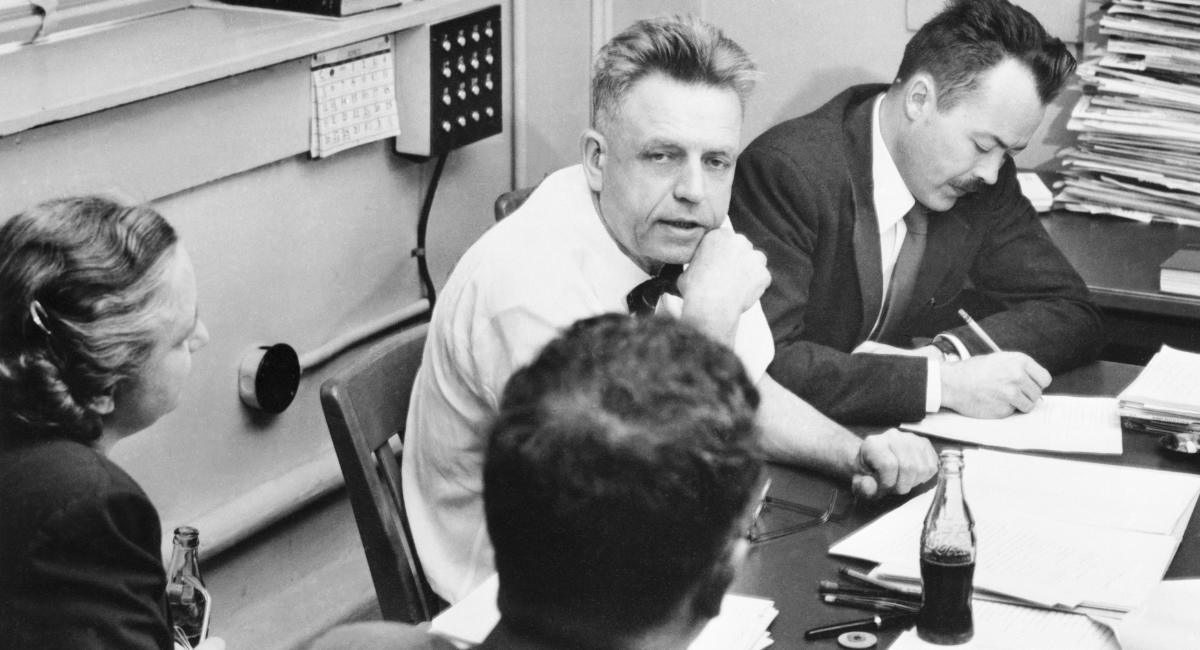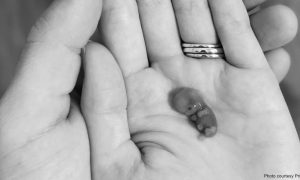This article is part two in a Live Action News series about Alfred Kinsey and the impact of his claims on our culture. Read Part One, Part Three, and Part Four.
WARNING: Content may be inappropriate for younger readers.
As noted in part one of this series, there are many legitimate criticisms to be leveled against “Father of the Sexual Revolution” Alfred Kinsey’s books, “Sexual Behavior in the Human Male” and “Sexual Behavior in the Human Female.” Specifically, aspects of Kinsey’s methodology have been called into question – including his sampling methods, his statistical analysis, and his interviewing technique. Kinsey’s books have also been criticized because they invoke the authority of science (which, as we’ll see, is not science at all) to promote a radical, revolutionary sexual agenda.
Kinsey himself stated: “[R]emember that even authorities sometimes publish things that aren’t so … [W]hat experts believe to be true may be found incorrect upon further investigation.”[1] Though he almost certainly did not intend these words to apply to himself or his work, an examination of the methodology behind his books shows that they, in fact, do.
SKEWED SAMPLING
Perhaps the most obvious methodological problem with Kinsey’s research lies within the sample population itself. Kinsey biographer James H. Jones writes that, because Kinsey’s sample was “far from random,” its reliability was “problematic.”[2]
Kinsey’s sample was not just non-random – it was deliberately skewed to favor unusual individuals. Jones notes that Kinsey “went to great lengths” to obtain histories from people with non-traditional sexual histories and habits, which “undermine[d] the representative quality of his sample.”[3]
And who were these unusual individuals? Jones writes that Kinsey interviewed too many prisoners, including and especially sex offenders. He also interviewed too many college students, and “too many [people] he knew in advance to be gay.”[4]
Kinsey co-author Paul Gebhard stated that, in their prison-based interviews, the Kinsey team “had no plan of sampling – we simply sought out sex offenders, and, after a time, avoided the more common types of offense (e.g. statutory rape) and directed our efforts toward the rarer types.”[5]
In other words, Kinsey sought out sexual deviants and gleaned his research primarily from them.
Although these individuals were clearly far from “average,” Kinsey used data obtained from them to make generalizations about the American population as a whole, effectively representing it as far more sexually promiscuous than it actually was.[6]
Another problem with Kinsey’s sampling method is that he relied on volunteers. Only a certain type of individual is willing to be interviewed about his or her sex life — a problem of which Kinsey was aware.[7] Noted psychologist Abraham Maslow – architect of the Hierarchy of Needs theory – conducted research on what he termed “volunteer-error,” and stated that “any study in which data are obtained from volunteers will… show a falsely high percentage of non-virginity, masturbation, promiscuity, homosexuality, etc.”[8]
In a paper co-authored by James M. Sakoda, Maslow concluded that people “with histories of unconventional sexual behavior would volunteer for [Kinsey’s] sex studies, while those whose histories were conventional would generally not participate.”[9]
Shortly after the “Male” volume’s release, anthropologist Geoffrey Gorer said that, because Kinsey relied on volunteers at college lectures and “on personal introductions from interested individuals … his population is completely distorted” and “statistically invalid[.]”[10]
Noted statistician John W. Tukey said that it was doubtful “whether useful and significant generalizations about the population as a whole can actually be inferred from the kind of samples which Dr. Kinsey has used.”[11]
SHADY STATISTICS
Neither Kinsey nor any of his co-authors were statisticians, and it showed.
Not only was Kinsey “uncritical and at times even careless about the data he collected,” according to Jones, but his reporting of that data often didn’t add up.[12]
For example, the data on the so-called “Adult Partners” of pre-adolescent girls presented in a table at the bottom of page 118 of his “Female” volume adds to 107%.[13] Reported sample sizes are often inconsistent in both volumes; for example, in the dedication of the “Male” volume, Kinsey thanks “the twelve thousand persons who have contributed to these data,” whereas a map on page 5 suggests a sample size of over 21,000.[14]
Jones writes:
By 1950, half a dozen scholarly reviews focused on the statistical and methodological aspects of Sexual Behavior in the Human Male, and most were critical. … [A] consensus was building that [Kinsey’s] work was badly flawed from a statistical standpoint.[15]
And distinguished statistician W. Allen Wallis concluded: “The inadequacies in statistics are such that it is impossible to say that the book has much value[.]”[16]
INTERVIEWING ISSUES
Kinsey relied on in-person interviews to gather data, which is problematic for a number of reasons.
John Romano, then-professor of psychiatry at the University of Cincinnati’s College of Medicine, said that people resist revealing truths about their sexual histories as a result of “cultural forces,” and because of this, “serious distortions” may result. He added: “Emotional blind spots in the interviewer are [also] frequent sources of distortion,” concluding, “I am afraid that my impression leads me to believe that [Kinsey’s] study consists of accurate recording of inaccurate data.[17]
Jones reveals that Kinsey placed the “burden of denial” on interviewees, asking loaded questions: “For example, instead of asking people if they had ever masturbated, he would inquire how old they were when they started masturbating.”[18] Kinsey also relied on his own subjective instincts to determine whether people were being truthful – everything was filtered through his personal, far-from-unbiased lens.[19]
What’s more, Kinsey co-author Paul Gebhard confirmed that interviews were often coerced.[20] Along the same lines, two nurses interviewed by Kinsey charged that “he could provoke any answer that he might want.”[21]
AN ALARMING AGENDA
It appeared Kinsey was actually seeking some kind of so-called ‘scientific data’ that would absolve him of his guilt feelings about his own unusual sexuality by ‘proving’ it to be ‘normal.’ Kinsey had “a strong need for self-justification,” according to biographer Jones.[22] But it is flawed to assert that numbers render behavior normal and/or that behaviors are moral by their mere existence.
As Norman Vincent Peale, author of “The Power of Positive Thinking,” said: “No matter how many murderers there are, murder will never be normal.”[23]
Similarly, in its review of “Sexual Behavior in the Human Female,” Science magazine stated, “[I]t often seems to culminate in propaganda for certain sociological views: that what is common in sexual behavior must be right[.]”[24]
And Time magazine stated, “Kinsey’s work expresses and strengthens an attitude that can be dangerous: the idea that there is morality in numbers.”[25]
MEDIA MANIPULATION
Despite all of these flaws, the Kinsey “findings” were parroted and promoted by an all-too-eager press whose articles Kinsey essentially censored in order to make them conform to his agenda; prior to publication, mainstream reviews of the “Sexual Behavior” books were submitted to Kinsey for his own approval and revision, entirely corrupting their objectivity.[26]
According to Jones, Kinsey did not restrict his manipulation to members of the mainstream press, but extended it to scholarly authors, as well. He reportedly “devise[d] a way to corrupt a system of peer review designed to operate without input from authors” by getting experts “in various fields” to “volunteer to review the book,” thereby “plant[ing]… many reviews in academic journals.” Essentially, he selected his own biased reviewers.
In the end, Kinsey’s ‘findings’ were foisted upon an unsuspecting public which naively accepted anything presented as ‘science.’ Even the most shocking claims were swallowed whole and digested by an overly trusting and unquestioning culture.
The damage done by this wholesale acceptance of Kinsey’s pseudoscience has been most pronounced in the effects it has had upon children, as will be discussed in the next installment of this exclusive Live Action News series.
1 – Alfred C. Kinsey, An Introduction to Biology, J. B. Lippincott Company, 1926, p. 529.
2 – James H. Jones, Alfred C. Kinsey: A Life, W.W. Norton & Company, New York, 1997, p. 522.
3 – Ibid, p. 349.
4 – Ibid, p. 522.
5 – Paul Gebhard et al, Sex Offenders, Bantam Books, New York, 1965, pp. 31-3.
6 – Wardell Pomeroy, Dr. Kinsey and the Institute for Sex Research, Harper & Row, New York, 1972, p. 293.
7 – Jones, pp. 641, 687.
8 – A. H. Maslow, “Self Esteem (Dominance-Feeling) and Sexuality in Women,” The Journal of Social Psychology, 1942, 16:2, pp. 259-294.
9 – A. H. Maslow & J. M. Sakoda, “Volunteer-error in the Kinsey study,” The Journal of Abnormal and Social Psychology, 1952, 47(2), pp. 259–262.
10 – Geoffrey Gorer, “A Statistical Study of Sex,” New York Herald Tribune, Feb. 1, 1948, p. 4.
11 – Jones, p. 647.
12 – Ibid, p. 509.
13 – Alfred C. Kinsey et al, Sexual Behavior in the Human Female, W.B Saunders Company, Philadelphia, 1953, p. 118.
14 – Alfred C. Kinsey et al, Sexual Behavior in the Human Male, W.B. Saunders Company, Philadelphia, 1948, dedication page, p. 5.
15 – Jones, pp. 635-6.
16 – W. Allen Wallis, “Statistics of the Kinsey Report,” Journal of the American Statistical Association, 1949, 44:248, p. 466.
17 – Jones, p. 453.
18 – Ibid, p. 363.
19 – Ibid, pp. 363-4.
20 – Masters et al, Ethical Issues in Sex Therapy, Volume II, Little, Brown and Company, Boston, 1980, p. 256.
21 – Jones, p. 399.
22 – Ibid, p. 411.
23 – Norman Vincent Peale, “Must We Change Our Sex Standards?: A Reader’s Symposium,” Reader’s Digest, June 1948, p. 4-5.
24 – Bentley Glass, review of Sexual Behavior in the Human Female, Science, April 30, 1954, pp. 601-2.
25 – “5,940 Women,” Time, Aug. 24, 1953, p. 58.
26 – Jones, pp. 546-7.
27 – Ibid, p. 552.







